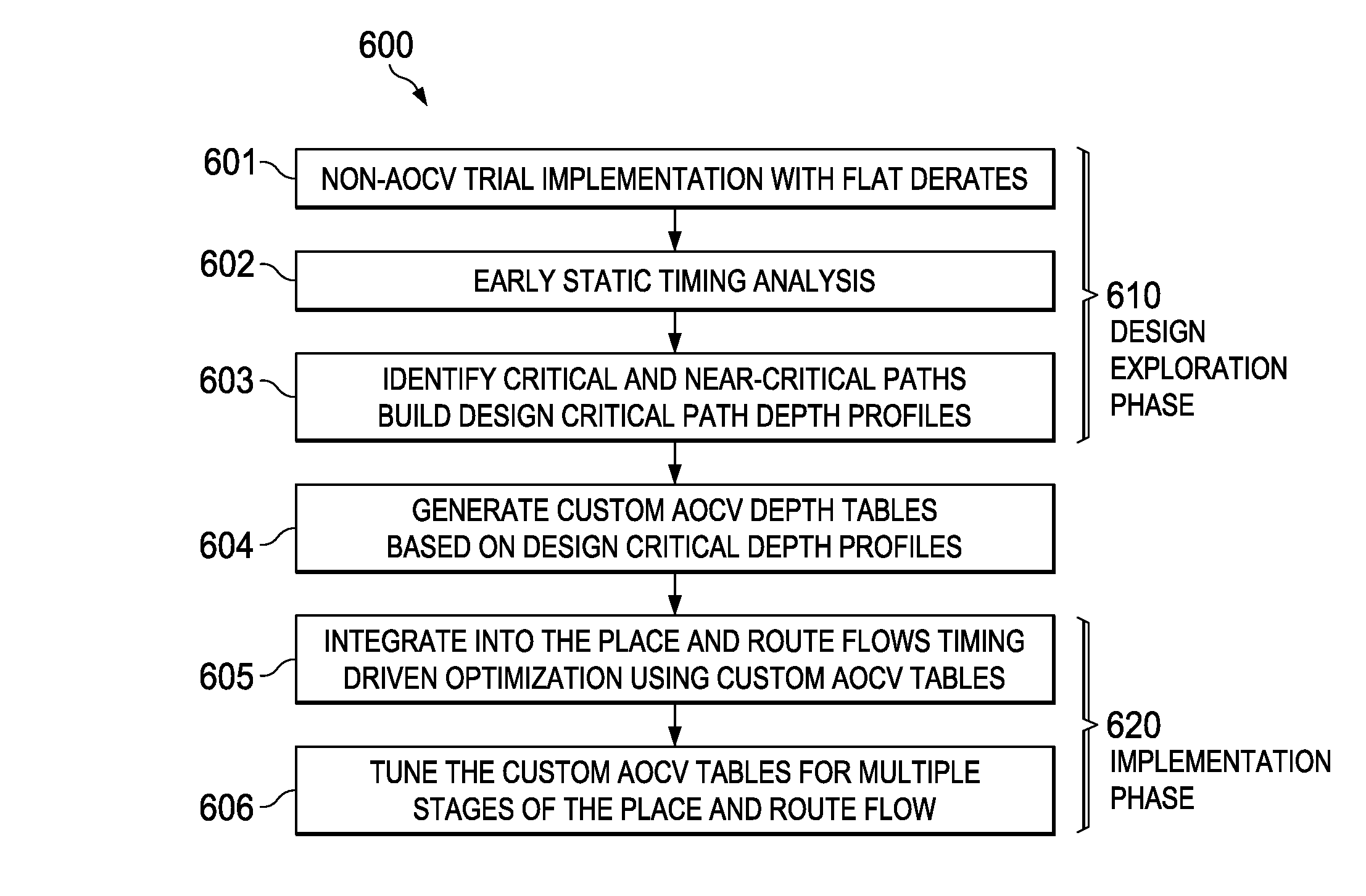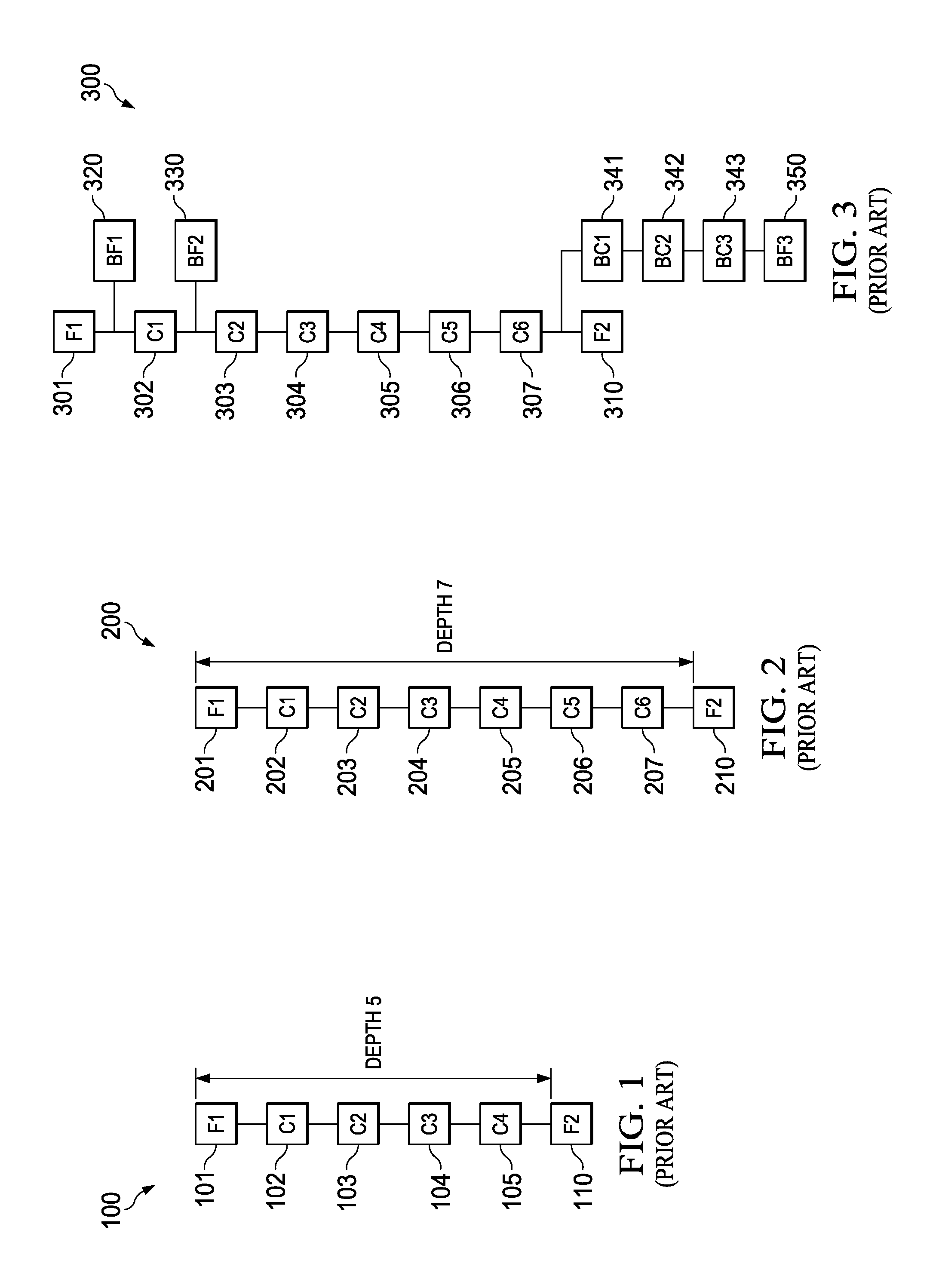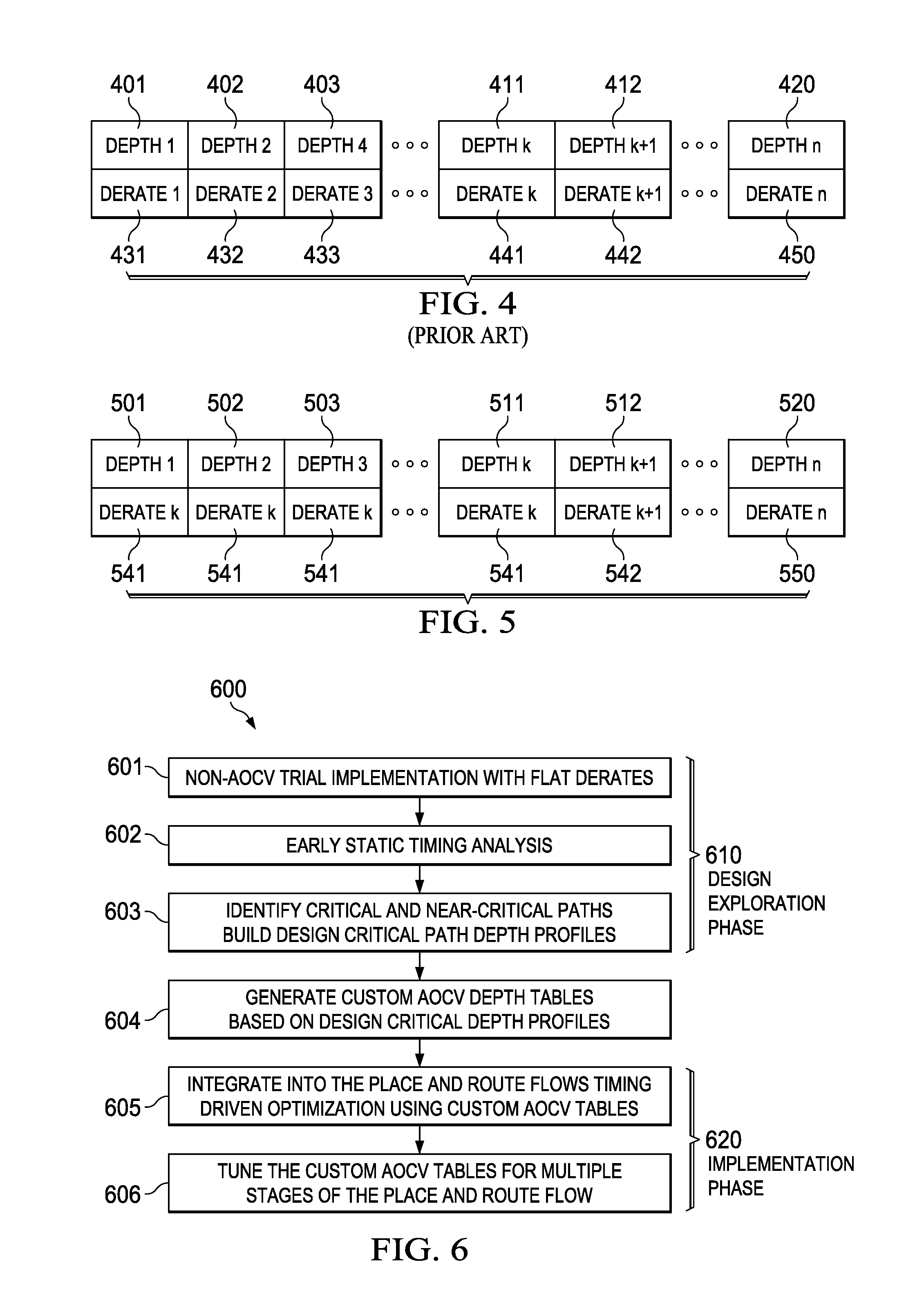Gradient AOCV methodology enabling graph-based timing closure with AOCV timing models
a graph-based timing and graph-based technology, applied in the field of timing closure, can solve the problems of difficult to meet frequency goals, limited accuracy of timing analysis using typically, and down the cell, so as to improve correlation, reduce pessimism, and accurate delay estimation
- Summary
- Abstract
- Description
- Claims
- Application Information
AI Technical Summary
Benefits of technology
Problems solved by technology
Method used
Image
Examples
Embodiment Construction
[0029]This invention concerns timing closure in integrated circuit design. Timing closure means that the circuit of the integrated circuit preforms its intended function in a timely manner to feed other subsequent functions.
[0030]A technique called variation comprehension in layout optimization is often used for effective timing closure and to reduce signoff-timer to layout iterations. A typical prior art technique uses flat derate based closure which employs very pessimistic assumptions for safety. These pessimistic assumptions result in increased area and power requirements than are necessary. These pessimistic assumptions may result in some designs that cannot be closed. This means that the designed circuit cannot be assured of operating correctly at the intended speed. Thus it is not practical to derive a single flat derate covering whole library
[0031]The prior art includes the following techniques to attempt to solve this problem. The first such technique is custom cell based d...
PUM
 Login to View More
Login to View More Abstract
Description
Claims
Application Information
 Login to View More
Login to View More - R&D
- Intellectual Property
- Life Sciences
- Materials
- Tech Scout
- Unparalleled Data Quality
- Higher Quality Content
- 60% Fewer Hallucinations
Browse by: Latest US Patents, China's latest patents, Technical Efficacy Thesaurus, Application Domain, Technology Topic, Popular Technical Reports.
© 2025 PatSnap. All rights reserved.Legal|Privacy policy|Modern Slavery Act Transparency Statement|Sitemap|About US| Contact US: help@patsnap.com



